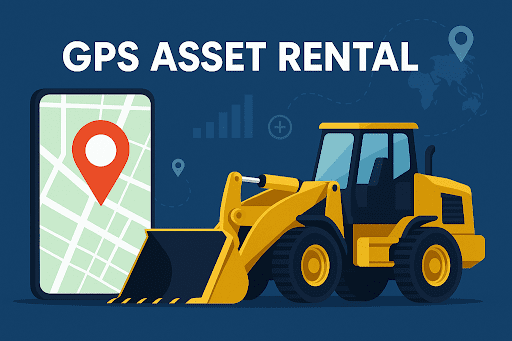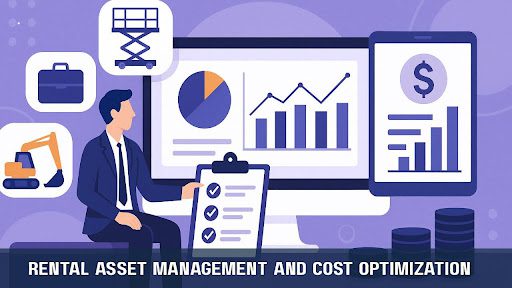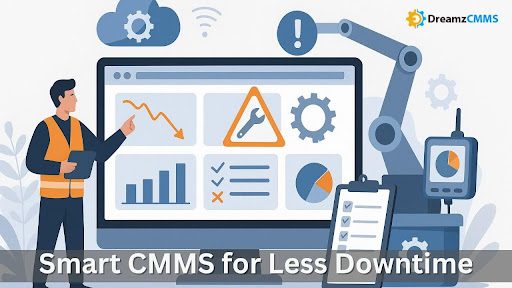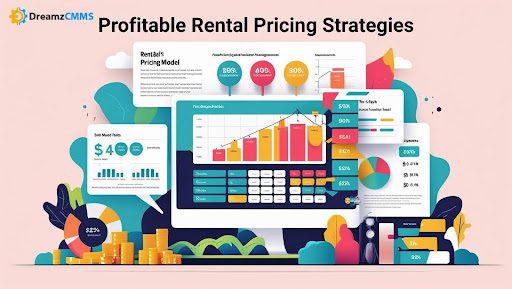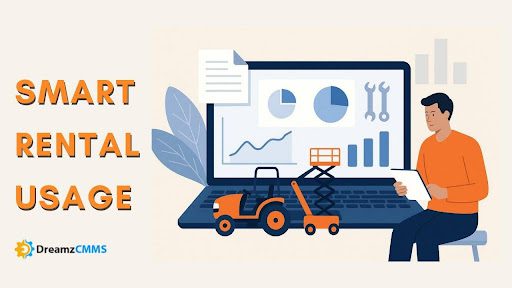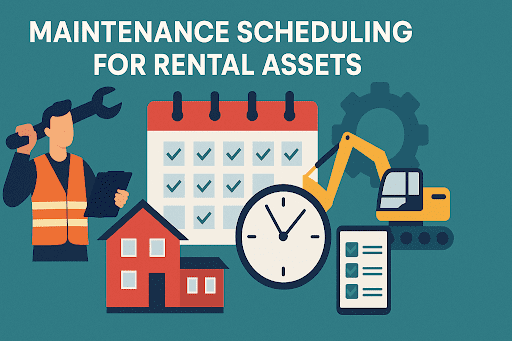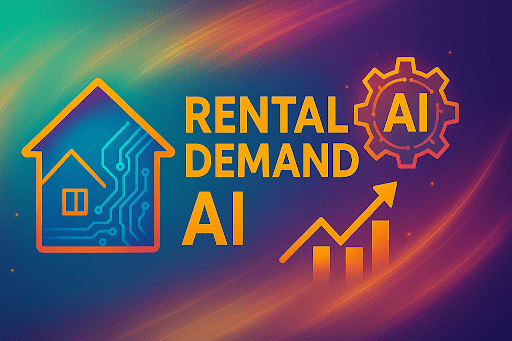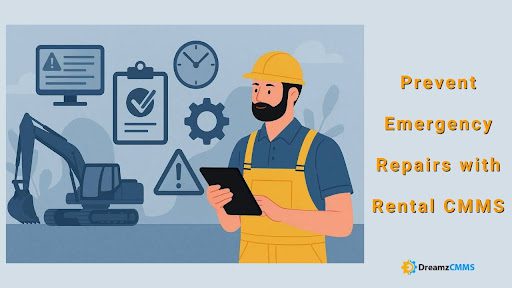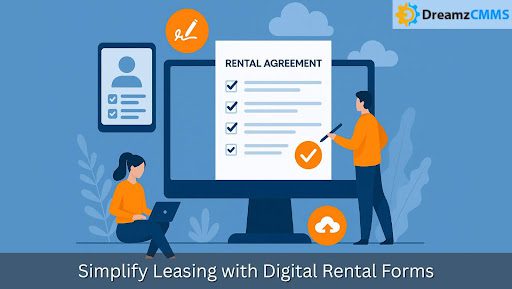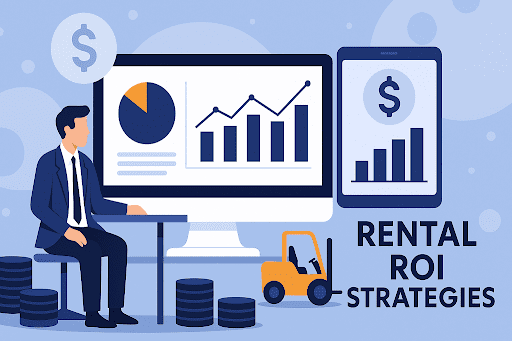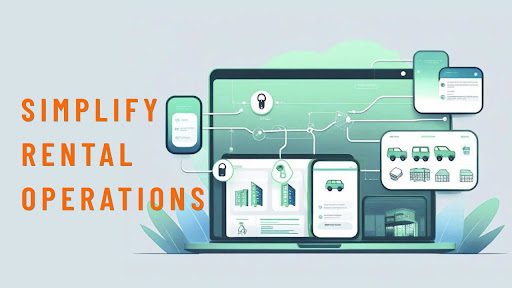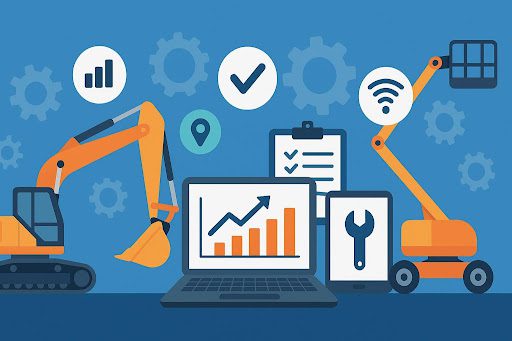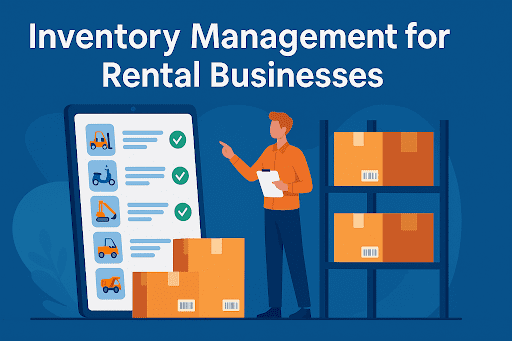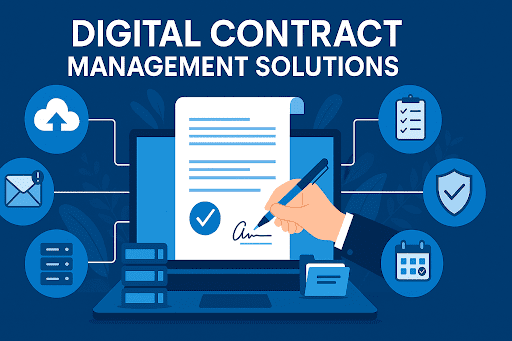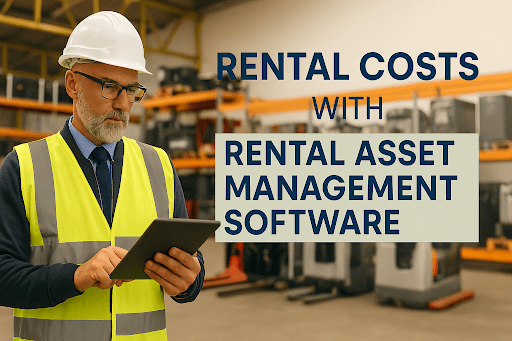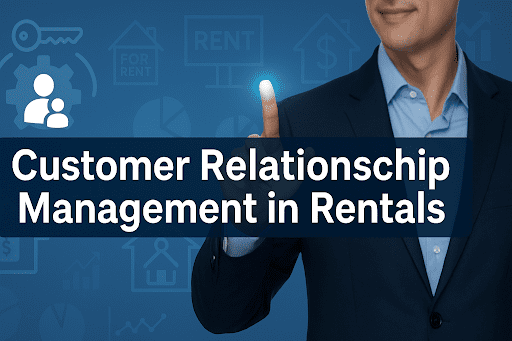 BACK TO Blog
BACK TO Blog
Asset Rental Management
Rental Asset
Rental equipment reliability functions as a vital operational factor which directly impacts customer contentment and operational efficiency and asset investment return. Trust remains the foundation of the rental industry while customers demand that their rented equipment functions optimally throughout its usage period without interruptions. The implementation of appropriate systems becomes essential to achieve consistent equipment reliability across rental fleet operations. The implementation of traditional maintenance methods creates unplanned downtime
- July 21, 2025
- DreamzCMMS Team
- 12 minutes read
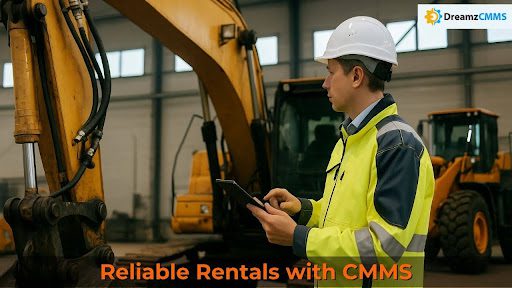
- July 21, 2025
- DreamzCMMS Team
- 12 minutes read
Rental equipment reliability functions as a vital operational factor which directly impacts customer contentment and operational efficiency and asset investment return. Trust remains the foundation of the rental industry while customers demand that their rented equipment functions optimally throughout its usage period without interruptions.
The implementation of appropriate systems becomes essential to achieve consistent equipment reliability across rental fleet operations. The implementation of traditional maintenance methods creates unplanned downtime and expensive emergency repairs while reducing rental asset uptime.
A Rental CMMS represents a transformative solution which brings significant improvements to asset performance reliability. The combination of predictive reliability insights with real-time monitoring and automated scheduling capabilities in CMMS enables reliable asset performance while extending equipment life and delivering market competitiveness to rental businesses.
The following blog examines Rental CMMS technology benefits for equipment reliability improvement together with necessary system features and implementation methods to enhance rental equipment maintenance and rental fleet reliability.
Asset Maintenance Management Software
DreamzCMMS enables organizations to optimize their workflows while maintaining rental fleet reliability and tracking equipment performance effectively.
Explore Asset Maintenance Management Software
Equipment Reliability Creates Fundamental Value in Rental Operations
Equipment reliability stands as a critical factor which directly affects the success of rental businesses.
Key Benefits of High Equipment Reliability
- Customer Trust and Repeat Business
Equipment reliability enables customers to finish their projects according to schedule without experiencing delays. The tracking system for field equipment condition ensures clients receive assets that have received proper maintenance before dispatch. These business relationships require strengthening because they are essential for success—learn more about Customer Relationship Management in Rentals.
- Improved ROI and Rental Asset Uptime
The availability of equipment for rental operations leads to more bookings which results in better return on investment (ROI). Equipment reliability results in longer operating time since it reduces repair periods thus creating more revenue opportunities. The Asset Rental Management Software helps rental businesses achieve better optimization of their rental operations.
- Cost Efficiency and Lower Maintenance Expenses
Unplanned breakdowns become expensive to manage. The practice of preventive care minimizes emergency repairs which leads to major reductions in labor expenses and parts costs.
- Improved Asset Dependability Metrics
Businesses maintain strong asset dependability metrics by tracking two key performance indicators which include mean time between failures (MTBF) and mean time to repair (MTTR).
- Extended Equipment Lifecycle
Equipment maintenance and reliability practices extend the life of assets which helps organizations save on replacement costs while promoting sustainability.
Implementing these advantages manually proves challenging because it produces multiple errors.
Challenges of Maintaining Equipment Reliability Without CMMS
Rental businesses maintain their operations using manual or reactive maintenance methods despite understanding their importance. Outdated maintenance approaches result in reduced equipment reliability because of:
- Lack of Real-Time Visibility – Equipment monitoring in real-time becomes impossible because it lacks direct access to machine data.
- Inefficient Scheduling – Paper logs or spreadsheets result in missed preventive maintenance schedules.
- Limited Historical Data – Manual records provide no clear insights for predictive reliability insights.
- Spare Parts Shortages – Without integrated inventory control, parts shortages delay critical repairs.
- Lack of Usage Insights – No equipment usage analytics means businesses cannot track wear and tear accurately.
Rental asset management challenges require proper understanding of operational inefficiencies for better operations—read more in Overcoming Rental Asset Management Challenges.
Reliable asset performance requires CMMS for effective management.
How Rental CMMS Enhances Equipment Reliability
A Rental CMMS system that receives proper implementation transforms maintenance operations to deliver high rental fleet reliability and improved equipment availability.
1. Preventive Maintenance for Reliability
The foundation of equipment reliability depends on executing preventive maintenance at the correct time. Maintenance tasks like lubrication, filter replacement and inspections get scheduled automatically as part of preventive reliability schedules.
A generator that follows an oil change schedule based on 250 operating hours will experience longer operation and prevent unexpected engine breakdowns.
2. Predictive Reliability Insights
CMMS uses sensor data together with maintenance records to generate predictive reliability insights. The system implements proactive maintenance that detects failing components before breakdowns happen through scheduled maintenance tasks.
3. Real-Time Equipment Monitoring
The implementation of IoT technology enables the continuous monitoring of equipment through temperature and vibration and fuel consumption measurements. The system generates alerts when any parameters change which enables maintenance teams to prevent unexpected equipment stoppages.
4. Equipment Performance Tracking and Usage Analytics
The CMMS maintains all equipment performance records and provides equipment usage statistics to detect misuse and operational inefficiencies and equipment overuse. The acquired knowledge enables managers to optimize maintenance intervals and modify usage schedules.
5. Rental Fleet Maintenance Reliability
The implementation of CMMS across all equipment ensures rental fleet maintenance reliability because it standardizes maintenance procedures. The standardized care system extends to every rental asset regardless of its storage location at a single depot or multiple depots.
6. Field Equipment Condition Tracking
Technicians use mobile applications to update asset health status which enables fast repair responses and accurate field equipment condition tracking.
7. Asset Lifecycle Reliability Tools
CMMS asset lifecycle reliability tools track assets throughout their lifespan from acquisition to retirement to determine refurbishment or replacement or retirement decisions based on reliability data.
8. Rental Equipment Optimization
Better rental equipment optimization emerges from analyzing equipment performance and downtime statistics and usage information. The strategic relocation of high-demand equipment to busy locations combined with scheduling maintenance or resale operations for underutilized assets leads to improved rental equipment performance. The articleInventory Management for Rental Businesses provides valuable information about effective inventory control.
Integrating RFID for Enhanced Equipment Reliability
Adding RFID Asset Tracking Software to CMMS boosts accuracy and tracking efficiency. The use of RFID tags delivers immediate equipment status and location data which enhances field equipment monitoring and maintains rental fleet maintenance reliability.
The article RFID Asset Tracking Software explains this integration in detail.
Key Features of CMMS for Reliable Asset Performance
To select a Rental CMMS that enhances equipment reliability you should look for:
- Automated Preventive and Predictive Maintenance – Automated Preventive and Predictive Maintenance reduces the occurrence of unexpected equipment failures.
- IoT and Telematics Integration – IoT and Telematics Integration serves as a fundamental requirement for real-time equipment monitoring and predictive analysis.
- Mobile CMMS Access – Mobile CMMS Access enables technicians to record field equipment condition tracking data from any location.
- Detailed Equipment Usage Analytics – The system provides Detailed Equipment Usage Analytics which enables users to optimize scheduling and usage patterns.
- Integrated Spare Parts Management – Spare Parts Management operates as an integrated system that maintains component availability which shortens repair periods.
- Reliability-Centered Maintenance Tools – The reliability-focused maintenance system directs available resources toward critical equipment components.
Best Practices for Using CMMS to Improve Equipment Reliability
To maximize results:
Step 1: Define Clear Reliability Goals
The system monitors performance indicators that include MTBF improvements as well as lower downtime and enhanced asset dependability metrics.
Step 2: Digitize All Asset Information
Enter all relevant documentation for assets such as manuals and warranties and service history records.
Step 3: Train Your Team
Field technicians must understand how to properly document equipment status through the CMMS system as well as interpret its reports.
Step 4: Use Predictive Maintenance
Predictive reliability analysis allows maintenance teams to detect potential equipment failures before they occur.
Step 5: Monitor and Optimize
Regular equipment performance tracking analysis should be performed to enhance rental fleet maintenance reliability through updated maintenance schedules.
Long-Term Benefits of CMMS for Equipment Reliability
The correct implementation of Rental CMMS provides more than immediate solutions to maintenance issues because it generates enduring advantages that boost revenue and customer happiness and maintain business operational stability. Rental companies can transform their maintenance operations into strategic advantages through predictive reliability insights and real-time equipment monitoring and asset lifecycle reliability tools.
Let’s explore these benefits in detail:
1. Minimize Unplanned Downtime
The biggest obstacle rental businesses face is unplanned downtime which results in lost bookings and customer dissatisfaction and major revenue reductions.
A CMMS reduces this risk by:
- Real-time equipment monitoring systems along with IoT sensor alerts enable proactive issue detection through the detection of unusual vibrations and temperature changes and pressure drops before failures occur.
- The predictive reliability insights built into CMMS allow scheduling maintenance tasks based on actual equipment condition instead of fixed time intervals thereby decreasing unexpected breakdowns.
- Mobile work order management enables immediate dispatch of technicians to failures so repair times are minimized.
The result? Equipment operates for longer periods while requiring less time in repair facilities which enhances equipment reliability.
2. Boost Rental Asset Uptime
Higher uptime in rental assets leads to higher revenue because operational assets produce income throughout each operational day.
A CMMS contributes by:
- The scheduled preventive maintenance system protects equipment readiness for dispatch operations thus avoiding last-minute maintenance cancellations.
- The implementation of Fleet-Wide Reliability-Centered Maintenance through CMMS directs maintenance resources toward essential revenue-producing equipment to maintain continuous operation.
- Equipment usage analytics enable scheduling optimization through the distribution of underutilized assets to high-demand areas which improves fleet availability.
Organizations which operate in competitive rental markets should prioritize high uptime maintenance to gain market advantage when seeking customer returns.
3. Improve Asset Dependability Metrics
The measurement of equipment reliability depends on tracking two fundamental dependability metrics named mean time between failures (MTBF) and mean time to repair (MTTR).
With a CMMS:
- Managers gain complete visibility into equipment performance and service history through detailed tracking systems which enables them to identify recurring failure patterns and their root causes.
- CMMS dashboards enable data-driven decision making through visual representations of downtime trends and repair frequency and component performance which support better planning.
- The continuous tracking of dependability KPIs enables businesses to establish achievable improvement targets and evaluate their advancement effectively.
The collected data enhances equipment operational excellence while building stronger customer relationships because reliable rental services matter to them.
4. Extend Asset Lifecycle
The premature replacement of rental equipment leads to excessive financial expenditure. Regular condition-based maintenance extended asset lifespan helps businesses achieve the highest possible return on investment for their assets.
A CMMS supports lifecycle extension by:
- Preventive actions performed on schedule include lubrication maintenance along with part replacements and equipment calibration to minimize equipment deterioration.
- The CMMS employs field equipment condition tracking and sensor data to generate repair and refurbishment recommendations which prevent small issues from becoming major problems.
- Asset lifecycle reliability tools in the system determine the most appropriate moment to refurbish or sell or retire assets by analyzing their performance records and historical maintenance records.
This methodology decreases capital costs while helping organizations maintain sustainability through equipment longevity.
5. Achieve Rental Equipment Optimization
Rental equipment optimization stands as a fundamental practice because it allows assets to operate efficiently while producing revenue while preserving reliability.
CMMS enables optimization by:
- Equipment usage analytics enable managers to redirect equipment between assets that experience high or low usage through allocation systems.
- The scheduling of maintenance according to usage hours prevents both excessive servicing and service neglect for all assets thus preserving consistent reliability in the fleet.
- The integrated parts management system maintains component availability for preventive and predictive maintenance activities which decreases downtime while boosting fleet readiness.
Businesses can optimize their fleet operations from start to finish through Asset Rental Management Software when combined with other tools while maintaining operational reliability and profitability.
When combined with tools like, businesses can achieve end-to-end fleet optimization, balancing operational reliability with profitability.
6. Strengthen Customer Relationships and Business Reputation
Reliable equipment builds trust. A CMMS indirectly supports customer satisfaction by maintaining the expected performance of rental assets. When customers consistently receive dependable equipment:
- They are more likely to return for future rentals.
- The market competition leads to enhanced brand reputation because of positive reviews.
- Long-term contracts and bulk rental deals become easier to secure.
The management of customer relationships requires the implementation of Customer Relationship Management in Rentals as an essential practice.
7. Improve Regulatory Compliance and Safety
Rental equipment operations must adhere to numerous regulatory requirements along with strict safety standards. A CMMS helps ensure compliance by:
- The system allows users to store complete digital records for inspections and audit purposes.
- The system enables field operators to track equipment conditions through automated updates before equipment dispatches for safety verification.
- The system performs automated scheduling for safety checks according to established regulatory requirements.
The equipment dependability metrics improve through optimal working conditions and the system avoids legal consequences.
This comprehensive approach shows that Rental CMMS functions beyond maintenance software by delivering a strategic business investment which generates enduring profitability alongside reliable operations and devoted customer base.
Future Trends in Equipment Reliability
Equipment reliability will experience more profound digital transformation in the future:
- AI-Powered Predictive Reliability Insights – AI will forecast failures with exceptional accuracy.
- Blockchain for Maintenance Records – Secure, tamper-proof data will enhance compliance and trust.
- AR-Based Technician Assistance – Augmented reality will guide complex repairs in real-time.
- Automated Reliability-Centered Maintenance – CMMS will self-adjust schedules based on live performance data.
Final Thoughts
Equipment reliability directly affects both profit margins and customer contentment of rental businesses. Rental CMMS enables teams to boost equipment uptime and extend asset longevity and deliver dependable service through predictive reliability insights and real-time equipment monitoring and rental fleet maintenance reliability tools.
The combination of equipment usage analytics with field equipment condition tracking and asset lifecycle reliability tools within CMMS enables rental businesses to prevent unplanned equipment breakdowns while maximizing their rental equipment optimization.
Businesses must invest in modern CMMS along with RFID technologies because they have become necessary for both market competitiveness and top-tier rental service delivery.
DreamzCMMS – Your Partner in Equipment Reliability
The DreamzCMMS platform delivers equipment uptime enhancement together with predictive reliability information and rental equipment optimization capabilities.
Ready for More?
Talk to one of our CMMS experts and see how DreamzCMMS can simplify your maintenance operations.
Book a free consultation